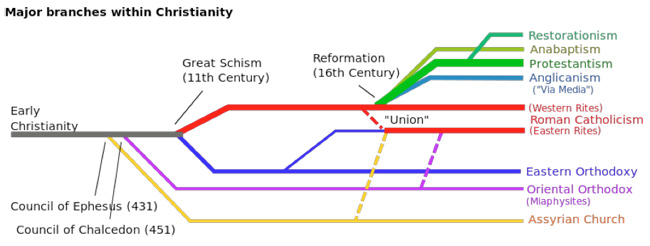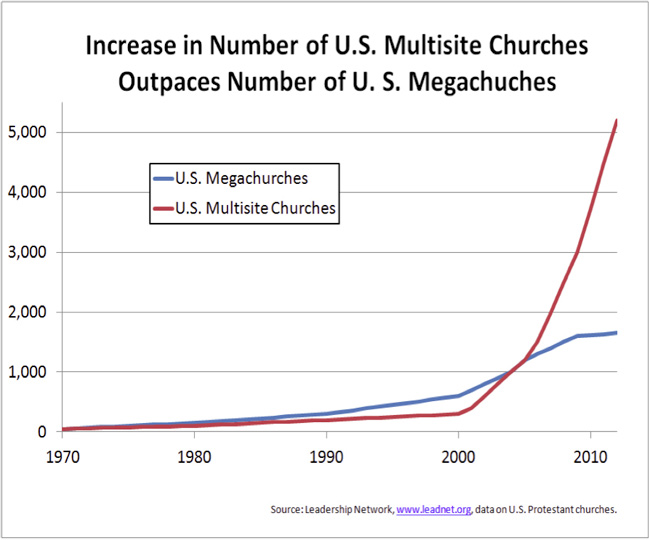Church Buyers
 A pastor, reverend and priest. No, this isn’t the setup line for a joke, but the actual titles used across multiple church denominations for clergy. Before your marketing or sales teams try to sell into the house of worship market, it’s helpful to know who today’s — and tomorrow’s — influencers and decision-makers will be. This is a look at the current roles and future trends that manufacturers, integrators and PR firms need to understand as part of making headway in this vertical market.
A pastor, reverend and priest. No, this isn’t the setup line for a joke, but the actual titles used across multiple church denominations for clergy. Before your marketing or sales teams try to sell into the house of worship market, it’s helpful to know who today’s — and tomorrow’s — influencers and decision-makers will be. This is a look at the current roles and future trends that manufacturers, integrators and PR firms need to understand as part of making headway in this vertical market.
Denominations
It’s messy. There are hundreds of denominations/sub-denominations within the Christian church alone, much less adding in other religious beliefs. The reason for the focus on Christian Protestant churches is simple math: In the United States, the house of worship market includes approximately 335,000 congregations (churches). About 300,000 of them are Protestant congregations; 22,000 are Catholic (with approximately 68 million members); only 12,000 are non-Christian congregations. Nonetheless, it is still easier to help identify the role of the church staff (and sometimes volunteer [“lay”] leaders) along denominational lines as a starting point.
The graphic below, courtesy of Wikipedia, demonstrates a small representation of just how messy trying to understand denominations can be. And it doesn’t begin to show to further breakdown into specific denominational lines (of which there are hundreds).
Mainline Churches
There are four groups of ‘mainline’ churches; that is, churches with a long denominational heritage. These are Lutheran, Presbyterian/Reformed, Anglican/Episcopalian, Methodist/Wesleyan. Within each of these are many sub-divisions (United Methodist, Lutheran Church Missouri Synod, etc.).
Typically, these mainline denominations are the oldest churches, with the heaviest concentrations in the northeastern part of the US.
Episcopalian: The clergy are called “rector,” but they’re addressed as “father.” Taken as an offshoot of the Catholic church and Protestant church, Anglican/Episcopalian is a middle-ground between the two. Other possible buyers/decision makers: associate rector, director (of something or other), committee personnel (lay).
Presbyterian: The clergy are called “pastors,” but you will see “Rev.” or “Reverend” in front of the name. They go by pastor. Other possible buyers/decision makers: associate pastor, director (of something or other), elder (lay), committee personnel (lay).
Lutheran: The clergy are called pastors, but you will see Rev. or Reverend in front of the name. They go by pastor. Other possible buyers/decision makers: associate pastor, elder (lay), committee personnel (lay).
Methodist: The clergy are called “minister.” Unlike some other denominations, the title of elder is one of great significance, but they would still be addressed as minister. Other possible buyers/decision makers: associate minister, director (of something or other), deacon (staff or lay), committee personnel (lay).
Evangelical Churches
Where the mainline churches were the first in the U.S., evangelical churches began their meteoric rise in both prominence and size (attendance) in the late 1800s. The term evangelical is not the best term, since some of the mainline churches would also fit into the evangelical title. However, as a way of distinction from the very old denominations, the term evangelical arose as a way to describe the newer Protestant churches.
There are, literally, too many denominational titles to even begin to list (including some from the above list). However, a basic list of churches in this category includes: Baptist, Church of God, Church of Christ, Assembly of God, Holiness Church, Foursquare, New Life Churches, Apostolic Church — and the list goes on.
Depending upon the heritage of a particular denomination, they may include clergy positions that fit the titles from any number of mainline churches (pastor being most prominent), and also include “bishop,” “apostle,” “apostolic elder” and more. Generally speaking, if the denominational affiliation (or lack thereof) is unknown, you’ll most likely be safe when using the title pastor.
Growth Churches
The last 30 to 40 years has seen a trend in churches that experience double-digit or greater annual growth. Only a small percentage of churches have this kind of dramatic growth, yet the trend shows that they are often either offshoots of an existing evangelical denomination or non-denominational churches. Far and away, these churches started off as new churches or church ‘plants’ by another church.
Growth churches, too, have a wide variety of background heritage, but even if they do have a denomination they support in some way, most downplay (almost hide) this affiliation. Again, the majority of clergy titles are pastor, but often with a twist. For example, the senior pastor will not likely be an influencer or decision-maker for technology products, not because of a lack of authority, but a delegation of authority to other staff to handle the day-to-day operations of the church. Instead, influencers may include “associate pastor,” “pastor of (insert area here),” “business administrator,” “technical director,” “media pastor” and the key decision-makers are often “executive pastor” or “senior associate pastor.”
Church Size
As with any organization, the larger the church becomes (in attendance) the more departments, department heads and diverse the needs. Generally speaking, churches that exceed 2,000 in weekly attendance are dubbed “mega churches.” It is with these churches where most of the big bucks are spent on new construction and renovations/upgrades. Whereas the 1980s began the age of the mega church mega building, with auditoriums often accommodating 4,000 per service or more, the new millenium saw a new trend: multi-site campuses. These churches have grown more rapidly than any other church market trend, now with over 5,000 churches reporting multisite campuses.
Understanding today’s church, from denomination to clergy role to campus type is critical in marketing to and selling in this very unique vertical. And while it’s probably smart to target growth churches and address the leaders as pastor, the church planting movement and relaxed venue vibe may have them correcting you to “just call me Mike.” Hey, it’s church in America: ever-changing.
A former staff member at three mega churches and church technology consultant, Anthony Coppedge has developed a respected reputation as a leader in technical and communications circles within the church marketplace. Reach him at anthony@anthonycoppedge.com





